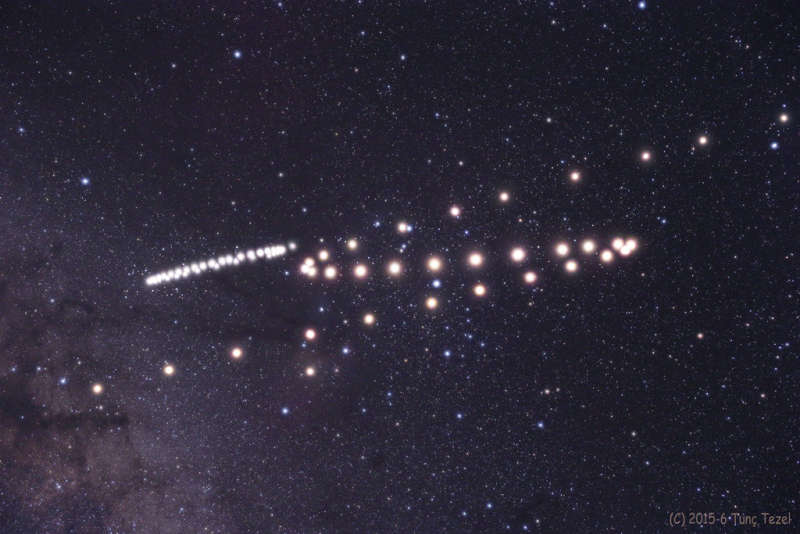Credit & Copyright: Tunç Tezel
(TWAN)
Explanation:
Wandering Mars and
Saturn have spent much of this year
remarkably close in planet Earth's
night sky.
In a sequence of exposures spanning mid-December 2015
through the beginning of this week,
this
composited skyview follows their time together, including both
near opposition,
just north of bright star Antares near the Milky Way's central bulge.
In the
corresponding video, Saturn's apparent movement is
seen to be back and forth along the flattened,
compact loop, while Mars traces the wider,
reversing S-shaped track from upper right to lower left through
the frame.
To connect the dots and dates just slide your cursor over the picture
(or follow this link).
It looks that way, but Mars and Saturn don't actually reverse
direction along their orbits.
Instead, their apparent backwards or retrograde motion with
respect to the background stars is a
reflection of the orbital motion of the Earth itself.
Retrograde motion can be seen
each time Earth overtakes and laps planets orbiting farther from the Sun,
the Earth moving more rapidly through its own relatively close-in orbit.
1999 2000 2001 2002 2003 2004 2005 2006 2007 2008 2009 2010 2011 2012 2013 2014 2015 2016 2017 2018 2019 2020 2021 2022 2023 2024 2025 |
Yanvar' Fevral' Mart Aprel' Mai Iyun' Iyul' Avgust Sentyabr' Oktyabr' Noyabr' Dekabr' |
NASA Web Site Statements, Warnings, and Disclaimers
NASA Official: Jay Norris. Specific rights apply.
A service of: LHEA at NASA / GSFC
& Michigan Tech. U.
|
Publikacii s klyuchevymi slovami:
Mars - Saturn - Mars - Saturn
Publikacii so slovami: Mars - Saturn - Mars - Saturn | |
Sm. takzhe:
Vse publikacii na tu zhe temu >> | |
